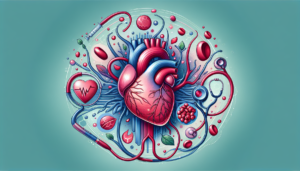Melatonin and Its Role in Circadian Rhythm Regulation
Melatonin and Its Role in Circadian Rhythm Regulation
Understanding Circadian Rhythms
Circadian rhythms are natural, internal processes that follow a roughly 24-hour cycle, influencing physiological and behavioral functions in living organisms. They respond primarily to light and darkness in the environment, playing a critical role in the regulation of sleep-wake cycles, hormone release, and various metabolic processes. These rhythms are governed by an internal body clock located in the suprachiasmatic nucleus (SCN) of the hypothalamus, which coordinates signals based on light input received through the retina.
What is Melatonin?
Melatonin, a hormone produced by the pineal gland, is integral to the regulation of circadian rhythms. Synthesized from the neurotransmitter serotonin, its secretion is influenced by environmental light conditions: levels peak at night and diminish during the day. Melatonin is often referred to as the "sleep hormone" because of its significant role in promoting sleep.
Melatonin Synthesis
Melatonin synthesis involves several steps:
- Tryptophan Conversion: The process begins with the amino acid tryptophan, which is converted into serotonin.
- Serotonin N-Acetylation: Serotonin undergoes N-acetylation to become N-acetylserotonin.
- Methylation: Finally, N-acetylserotonin is methylated to form melatonin, a reaction catalyzed by the enzyme hydroxyindole-O-methyltransferase.
This pathway is influenced not only by the availability of tryptophan but also by light exposure, making melatonin a key regulator of circadian rhythms.
Factors Influencing Melatonin Production
Several factors can influence melatonin production, including:
- Light Exposure: Light suppresses melatonin release. Conversely, darkness stimulates its production.
- Age: Melatonin levels generally decrease with age, which can contribute to sleep disturbances in older adults.
- Lifestyle Factors: Shift work, irregular sleep patterns, and exposure to screens at night can disrupt natural melatonin production.
Melatonin and Sleep Regulation
Mechanism of Action
Melatonin facilitates sleep regulation through its action on the brain’s receptors, primarily the MT1 and MT2 receptors. The binding of melatonin to these receptors influences multiple pathways involved in promoting sleep, including:
- Sleep Induction: Melatonin decreases sleep latency, the time it takes to fall asleep.
- Sleep Architecture: Melatonin influences sleep stages, particularly by increasing the proportion of REM sleep.
Melatonin Supplementation
Melatonin supplementation is commonly used to address sleep disorders, such as:
- Insomnia: Supplementation could help in reducing sleep onset latency for individuals struggling with insomnia.
- Jet Lag: Travelers crossing multiple time zones often experience jet lag. Melatonin can help adjust the body’s internal clock to minimize its effects.
- Shift Work Sleep Disorder: Individuals with non-traditional work schedules may benefit from melatonin supplements to regulate their sleep patterns.
Dosage and timing are critical when using melatonin supplements. Generally, a low dose, around 0.5 to 5 mg, taken 30 to 60 minutes before bedtime, is recommended. Users should be aware of potential side effects, including dizziness, daytime drowsiness, and hormonal effects.
The Role of Melatonin in Circadian Rhythm Disorders
Melatonin plays a vital role in various circadian rhythm disorders. These include:
Delayed Sleep Phase Disorder (DSPD)
In DSPD, individuals experience a significant delay in their sleep-wake cycles, which can disrupt daily activities. Melatonin has shown promise in shifting these cycles earlier, enabling better alignment with societal schedules.
Advanced Sleep Phase Disorder (ASPD)
ASPD involves sleeping and waking earlier than desired. Melatonin may be less effective in treating ASPD, but in some cases, it can help stabilize sleep patterns.
Non-24-Hour Sleep-Wake Disorder
Common among blind individuals, this disorder can lead to an unpredictable sleep schedule. Melatonin supplementation has been noted to help regulate cycles more predictably in affected individuals.
Melatonin and Health
Beyond sleep, melatonin has various physiological roles, impacting different health aspects:
Antioxidant Properties
Melatonin exhibits strong antioxidant capabilities, scavenging free radicals and reducing oxidative stress. This quality is particularly beneficial for cellular health and could have implications for aging and chronic diseases.
Immune System Regulation
Research suggests that melatonin can enhance the immune response by modulating the activity of immune cells. Melatonin’s role in inflammation indicates that it may be a useful adjunctive treatment in inflammatory diseases.
Mood Regulation
Melatonin’s interaction with the sleep-wake cycle can indirectly affect mood and mental health. Poor sleep quality is closely associated with conditions such as depression and anxiety. By improving sleep quality through melatonin supplementation, some individuals may experience improvements in mood and overall psychological well-being.
Melatonin and Seasonal Affective Disorder (SAD)
Seasonal Affective Disorder is a type of depression that occurs at certain times of the year, often influenced by seasonal changes in light levels. Due to its role in regulating sleep and mood, melatonin has been studied as a potential treatment option for SAD.
Seasonal Variations
During winter months, reduced sunlight exposure can lead to decreased melatonin production, which might contribute to depressive symptoms. Supplementing melatonin may help in restoring balance and improving mood during darker months.
Phototherapy and Melatonin
Combining light therapy (phototherapy) with melatonin supplementation has shown synergy in alleviating symptoms of SAD. Light therapy helps regulate circadian rhythms, while melatonin supplementation provides support in return to normal sleep patterns.
Future Perspectives on Melatonin Research
Advancements in Melatonin Research
Research on melatonin continues to evolve, with ongoing studies exploring its broader implications for health. Areas of interest include:
- Neurodegenerative Diseases: The neuroprotective effects of melatonin may hold promise in diseases like Alzheimer’s and Parkinson’s.
- Chronic Pain Management: Investigating melatonin’s analgesic properties in chronic pain conditions may reveal new therapeutic options.
- Cancer Therapy: Melatonin’s role in regulating cell growth and apoptosis may offer insights into its use as an adjuvant therapy in oncology.
Personalized Melatonin Therapy
As genetic and metabolic profiling becomes more accessible, personalized melatonin therapies may emerge, allowing for tailored approaches to sleep disorders and circadian rhythm disruptions based on individual needs and responses.
Melatonin in Everyday Life
Incorporating melatonin naturally through lifestyle practices can enhance sleep quality and promote overall well-being. Consider these tips:
- Optimize Sleep Environment: Create a dark, quiet space for sleep. Use blackout curtains and consider white noise machines if needed.
- Follow Regular Sleep Schedule: Aim to go to bed and wake up at the same time every day to help regulate your internal clock.
- Limit Light Exposure at Night: Reduce screen time before bed and utilize blue light-blocking glasses to minimize light interference.
- Manage Stress Levels: Engage in mindfulness, yoga, or relaxation techniques to reduce stress and improve melatonin production naturally.
Understanding melatonin and its role in regulating circadian rhythms will allow individuals to make informed decisions about their health and well-being. Through balanced lifestyles and awareness of light exposure, support from melatonin can enhance sleep quality and overall physiological harmony.
By staying informed and curious about advancements in melatonin research and its numerous health benefits, individuals set the stage for healthier living. Such knowledge empowers people to embrace effective strategies for managing sleep and circadian rhythm-related challenges in the fast-paced world we inhabit today.








